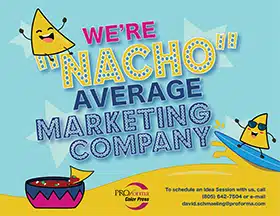How to Brainstorm Writing Ideas: A Modern Approach for Greater Results
- Updated on: 2024-04-21
- Read original article here

The origins of creative brainstorming date back to 1939. Ad executive Alex F. Osborn was the father of formal brainstorming techniques when he became frustrated with his team’s inability to generate creative ideas (see the video below to learn more about him).
But brainstorming, in a less formal sense, has been something humans have done for eons. How else did we become a civilized society? Those of us who are regularly brainstorming writing ideas today can learn from these predecessors!
Brainstorming exercises can be both fun and effective. They can help you get the most out of these sessions, so you have a library of campaigns, concepts, and topics to attract and convert your audience.
Content planning has many challenges. We conducted research to determine what they are, with many respondents indicating that “coming up with creative ideas” was a significant issue. Brainstorming has long been a solution to add an accelerant to a low-burning fire. But is it effective?
Research from the Harvard Business Review challenged Osborn’s belief that it enhances creative performance by up to 50 percent versus individual ideation. Their findings favor the latter, calling out why brainstorming doesn’t work — social loafing, social anxiety, regression to the mean, and production blocking.
Does that mean you should abandon brainstorming? Not all, but it does mean you need to pivot. Given that your enterprise content team has lots on their plates, the time you spend doing these exercises must create value. You also must consider the changes in team dynamics. We’re no longer all in the same room with a whiteboard.
How can you do it right? Check out these exercise tips for brainstorming writing ideas!
A big challenge in brainstorming is the people. You’re going to have extroverts and introverts. It’s a personality rainbow, but every color deserves a spot at the table. Structure can help ensure everybody is active and engaged. Without it, it will be a free-for-all that’s unlikely to produce much substance.
Structure means rules, and that’s not a bad thing, even in the realm of creativity. Those can include the following:
Depending on what the role is, each person should have a defined deliverable. It’s more than just saying you’re the moderator and you’re the notetaker. Consider these tips to circulate with team members before brainstorming.
A better-prepared team, looking at facts and metrics, can be the necessary guardrails for more productive brainstorming.
Talkers love to talk, but everyone deserves time to share their observances and metrics. In the first round of “sharing,” let everyone know that they have five minutes to hit the high points.
Then when it’s time to ideate new topics for writing, impose another time limit of three minutes per round. In those three minutes, they should be able to present the idea, why it matters, and its value to customers.
In the rounds of ideation, using thought starters and categories invites constraints, which can stimulate creativity. You need diverse ideas, but they need to be on point with what your audience needs and how your solutions meet those.
By assigning roles, instituting time limits, and spurring ideation with thought starters and categories, you could come away with lots of ideas for your content calendar.
There are two components to brainstorming writing ideas: idea generation and discussion. Even if you assign roles and establish parameters before meeting, not everyone will be ready. Without proper research and deeper analysis, ideas are likely to be mediocre at best. Thus, it may be a good approach to separate the two facets.
In addition to the assignments of each role, request each person to come to the table with at least 10 ideas. They’ll need to offer a bit of context — what it is, why it matters to the audience, and any other initial ideas.
Having ideas coming into the meeting can make things more efficient. Everybody has the chance to present and consider topics, honing in on the best ones.
While contributors present ideas, you can have a moderator open the floor for a quick discussion. Within a few minutes, you can put that topic in a bucket of yes, maybe, or no.
Give equal weight and time to everyone’s ideas. Map all ideas that are a definite yes. Then ask the team their thoughts on the granular aspects of the content — format, timing, keywords, funnel stage, buyer persona, etc.
Brainwriting is a type of brainstorming where participants write down ideas and then pass them on to others to read aloud. Then they have to add to them. Once it makes the round, you gather all the notes and brainstorm further to turn them into something. Check out the video below to see how it works.
Here’s how brainwriting can help you generate a significantly higher volume of ideas:
Team members are generating ideas simultaneously instead of listening to one person at a time. Thus, you’ll have more of these in less time. Idea generation happening in parallel is more efficient than standard brainstorming.
Many times, the smartest folks at your table aren’t the most outspoken. You can encourage their participation with brainwriting since it allows for private collaboration. Collaborative idea generation that occurs privately becomes public only with group approval, which can combat feelings of fear about sharing ideas.
Brainstorming is an old method, whether considering it as a part of human evolution or in the marketing sense. Its initial use didn’t include things like data, digitization, and other modern influences.
The environment for brainstorming has changed rapidly. But, with foundational good practices and exercises, it can be fruitful!
We’ve got many more resources and ideas for you. Here’s a few more related posts to dig deeper:
If you’re regularly getting your team together for brainstorming and content planning, we’d highly recommend developing a meeting agenda template that provides much of the guidance and structure we’ve talked about above. And it just so happens that we have a FREE, downloadable template for you below. ENJOY!
Images Powered by 


